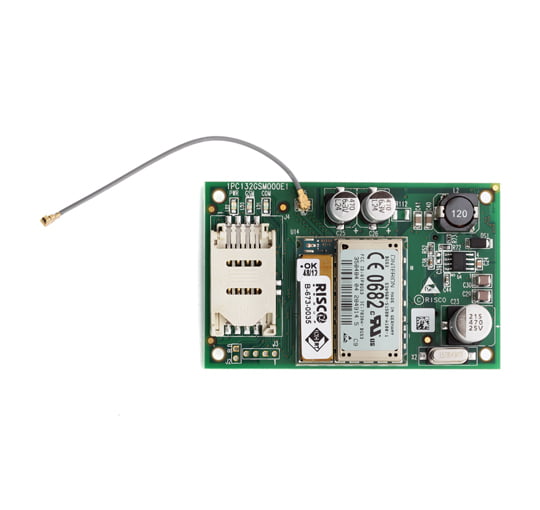Not only is the new low cost Crow GPRS/GSM alarm reporting product, the PowerLink, going to be onboard in the company’s own alarm panels, there’s also a new module (the CrowLink) that will interface to every other alarm panel available on the market.
This means installers taking advantage of loyalty rates from their suppliers, as well as those installers who are simply too comfortable with their current offerings to bother switching brands, will still benefit from Crow’s latest developments.
Another key characteristic of the new CrowLink GPRS/GSM device is that when a module is attached to an existing alarm panel it allows bureau installers to change their monitoring provider at any time without having to reprogram every panel.
Perhaps most importantly, the new Crow product means no end user need miss out on the advantages of GPRS alarm monitoring. Regular readers of SEM will be well aware of our feelings for GPRS and GSM monitoring.

And as telephone users embrace mobile formats wholeheartedly it remains hard to understand the alarm industry’s practice of continuing to cling to the PSTN dialler reporting path. It’s not just that we think the dialler is clunky 30-year old technology, there’s also something old fashioned about the way dialler comms functions in relation to alarm monitoring deals, full-stop.
Quite simply, the way things have been working for the last 3 decades virtually guarantees end users won’t get a particularly good deal for their 30 bucks a month.
Having said that, it’s impossible to fault the reliability of dialler comms and it’s true the speed of dialler processing has definitely improved over the past 15 years or so. But the fact end users pay not only for their monitoring service but also for every individual call their alarm panel makes to a monitoring station guarantees that inherent security levels provided by dialler-driven alarm panels remains low.
The guts of the issue is that more phone calls (higher polling rates) mean higher levels of security and with dialler that means much more cost. Using what is essentially a wireless Internet comms path with a fixed monthly cost, GPRS polling of panel status can take place almost as often as the end user requires – every 90 second if desired. Try that with dialler comms and the end user will get hit for a local call every 90 seconds, 24 x 7. That’s 960 local calls per day at 30 cents per call – a total cost of $8840 per month.

Such costs ensure that end users usually ask for weekly alarm polling and if the alarm has been taken out by the simple expedient of chopping the phone line, no one will be the wiser for up to 7 whole days. While Crow is by no means the first company to look seriously at GPRS, it is the first company to attempt to bring this technology to every single monitored line. It’s doing this by leveraging the company’s inherent design capabilities along with the quickfire development path provided by Crow’s inhouse manufacturing team at Arrowhead in NZ.
As we’ve pointed out a number of times before, Crow’s ability to churn out extremely capable product at very competitive prices has made it one of the most dynamic alarm companies of the past 5 years. There’s been no development of a hero product like a big alarm/access panel – instead the company seems to specialise in getting the basics right. It was inevitable then, that this quick-footed development capability and a competitive pricing strategy would eventually be applied to an alarm panel reporting upgrade. As it turns out that’s exactly what has happened. Developing the Link According to Crow’s Vince Robbie, Crow has been looking at GSM and GPRS for some time, with developments in both NZ and Israel.

As Robbie explains, the technology and hardware to do the job had already been developed by Crow and Radio Data Communications, and it was just a matter of building a software bridge to link 2 existing products, and negotiating a favourable rate for GPRS data. “Years ago our factory in Israel created a GSM module that plugs onto the keypad bus and sends it’s reporting signals as Contact ID.
I thought we could apply GPRS connectivity to that module,” says Robbie. “We then talked to Radio Data Communications who then wrote software for the Sony Ericsson module in our PowerLink product, which resulted in a capable low cost alternative to both dialler and existing GPRS services.” According to Robbie, there are other GPRS products on the market that target high end, high security customers – the traditional domain of Securitel. But he stresses Crow is not after this part of the market. “Essentially what we’re doing is giving installers a chance to start again with existing clients, we want to give them another lick at the market,” Robbie explains.
Essentially what we’re doing is giving installers a chance to start again with existing clients, we want to give them another lick at the market
Vince Robbie – Crow
“We’re also going to provide them with something that is genuinely superior to existing technology, and yet costs very little more than standard dialler panels.” “Crow’s new GPRS reporting product makes it affordable for mums and dads and small retailers to have a monitoring service that gives a far higher level of security than traditional dialler,” he says.
“The PowerLink is not an expensive piece of hardware but as a communicator it’s perfect,” says Robbie. “It transmitts all alarm messages point-to-point via the dedicated Permaconn Network that’s operated over a VPN. There is no connection to the internet which results in secure communication to the central station.” According to Robbie, Crow has got costs down to $4.95 per month with 4-hour polling, $8.50 per month with 1 hour polling, or $20 per month for 90 Second Polling of the primary GPRS reporting path.

To achieve this higher polling rate using the PSTN would result in charges of up to $260 per day. Those dollar figures are charged to the bureau per line – it’s up to the bureau to add the data costs to the client’s bill each month, or add these fees plus a small margin.
Whatever bureaus chose to do, the GPRS service will be very affordable indeed. And, Robbie says, from an installation point of view, installing a PowerLink wireless alarm is no more than a half hour job. Greater control Along with improved security levels, the PowerLink also gives bureaus greater control over their lines. “Importantly, there’s no need to reprogram a panel or change anything when installing the CrowLink – the server software can transpose account numbers and details before data reaches the Central Station,” says Robbie.
He says this means that bureaus can switch from an existing bureau service with no need to go through the laborious process of reprogramming every line to conform with a new provider’s receiver numbers. Instead when the module is fitted to all client panels, a bureau can switch providers at any time by providing the server a single new receiver destination. “People have been talking about a service like this for a long time but no one has actually ever done this before,” says Robbie. “RDC says what we are offering is a world first.” In terms of its operational capability, the PowerLink/CrowLink modules allow the RDC servers to monitor the unit’s signal strength and update firmware as required.

Once a signal is received by a GPRS server located at Optus, the signals are passed on to a monitoring station via a Permaconn Transceiver that emulates a standard Ademco 685 receiver. This data is then linked in the Central Stations software package for operator processing. Robbie says; “The really exciting part is that for $595 you’ll get an 8-zone GPRS alarm panel with an LCD keypad ready to go and with all the bells and whistles.” “We feel sales people will be able to sell this product,” says Robbie.
“It’s something new that not only works but gives customers far better service for a similar cost. “For us the greatest strength of the system is that it offers something much more secure than one week polling for virtually the same cost as every other commercially available dialler-based system,” he says. “Not only that, this module saves on call costs and still communicates if a would-be thief cuts the telephone line before entering the premises.”








